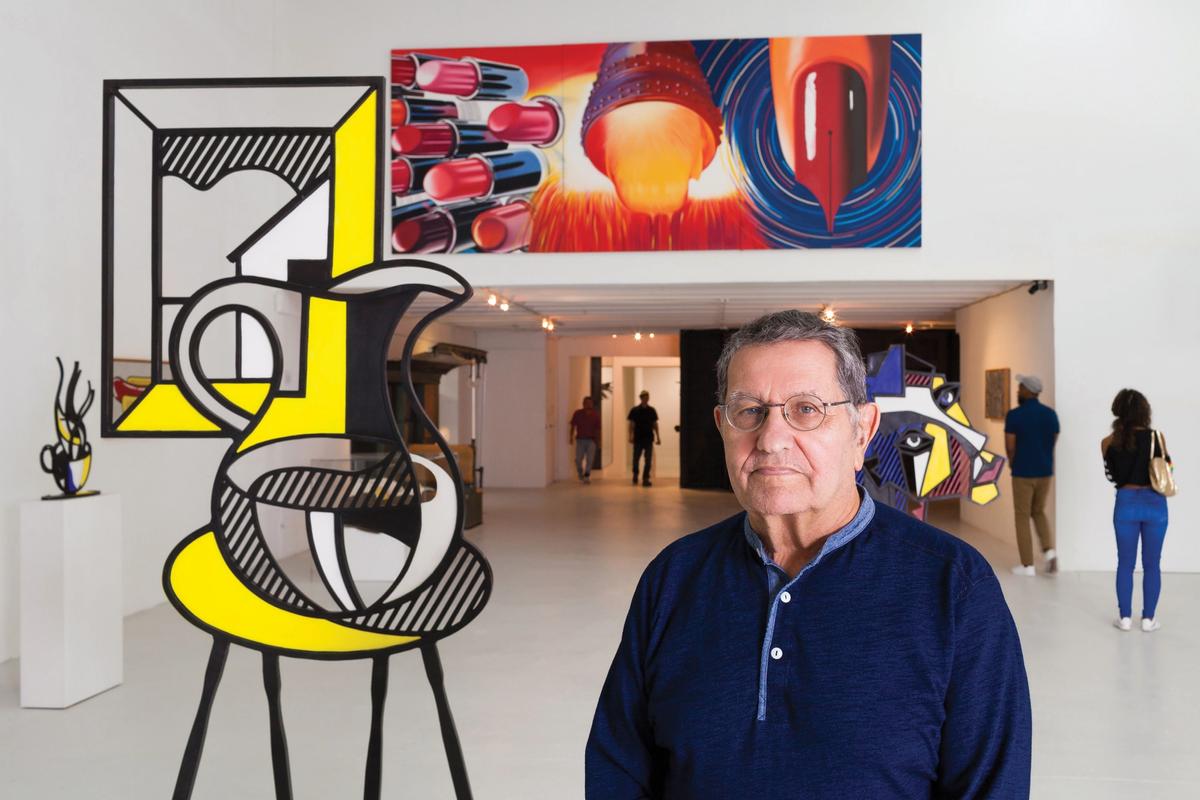The art collector and property tycoon Martin Margulies founded the Margulies Collection at the Warehouse, his non-profit arts space in the Wynwood Arts District of Miami, in 1999 with the vision of creating a space where the public could access his vast art collection for free. The non-profit institution, which hosts rotating exhibitions spanning everything from Abstract Expressionist paintings to Arte Povera works, celebrates its 20th anniversary this year.
Coinciding with Art Basel in Miami Beach, the collector’s long-time curator Katherine Hinds has organised the exhibition Can It Really Be 20 Years Already? Art in Our Times, Contemporary Masters, and Philanthropy (until 25 April 2020), which includes sculptures, photography, video, painting and large-scale installations by artists such as Willem de Kooning, Mark di Suvero, John Chamberlain, Cindy Sherman and others. The displays includes works that have become cornerstones of the collection, such as Anselm Kiefer’s towering stone-and-steel sculpture Die Erdzeitalter (ages of the world, 2014). A two-volume publication about the artists and works in the collection is also due to be released, with the first book focusing on a selection of paintings and sculptures in Margulies’s home, and the second on photography, video, large-scale sculpture and installations shown at the Warehouse.
Margulies also actively loans pieces from his private collection to major museums around the world, such as the Philadelphia Museum of Art, for its 2020 exhibition devoted to Jasper Johns, and the Museum of Modern Art in New York, for its forthcoming Donald Judd survey which is due to open next March.
I have no aspirations where money is no object because I’m not that type of collector
The Art Newspaper: What was the first work you bought?
Martin Margulies: I don’t remember. I have over 4,000 works in my collection. I just buy work.
What was your most recent buy?
A work by Nathalie Djurberg that is a video as well as a sculpture. It’s an animated video of a pink octopus embracing a ballet dancer. I like the work, period. I don’t have any analysis of it. It’s what I enjoy and I have several of Nathalie’s earlier works, and this one just added to my collection.
Where do you keep your works?
I have two facilities, a house and the Margulies Collection at the Warehouse, which is open to the public. It is a 55,000 sq. foot warehouse and we change [the display] every season. I’ll put Nathalie Djurberg’s work up next season during Art Basel in Miami Beach.
If your house was on fire, which work would you save?
I wouldn’t. I would put on the sprinklers.
If money were no object, what would be your dream purchase?
I don’t think of art collecting in those terms. I think only of work that I can afford. I have no aspirations where money is no object because I’m not that type of collector. It’s about enjoying the collection. Money doesn’t play into it.
What is the most surprising place you have displayed a work?
I only display in my house and my warehouse and I lend work out to museums, so there’s no particularly unusual place that I can recall.
Which artists, dead or alive, would you invite to your dream dinner party?
Frank Stella, for no particular reason other than that I like his work.
What would you serve at the dinner party?
Whatever I can. Maybe take-out.
What’s the best collecting advice you have been given?
Just to collect what you love if you can afford it. To acquire a work of art, you must love it and you must feel it.
Which work do you regret not buying when you had the chance?
I see thousands of work and obviously I can’t buy all of them. I’m not that type of collector. I’m not an acquirer, I’m a collector.


